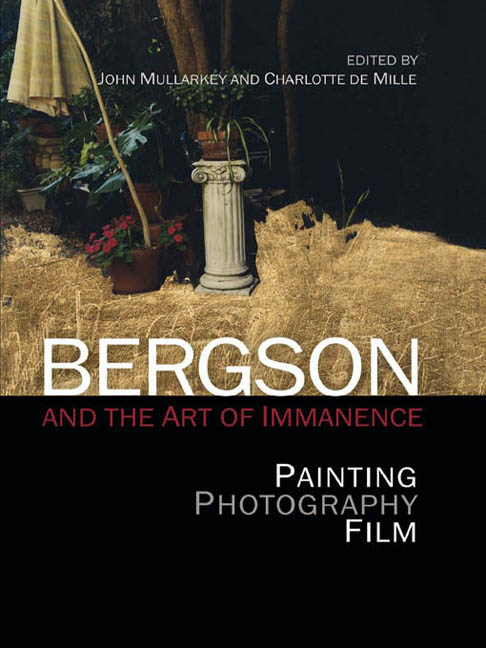Introduction: Art's Philosophy – Bergson and Immanence
Published online by Cambridge University Press: 07 December 2017
Summary
In an interview made for the opening of her installation, Nowhere Less Now, Lindsay Seers tells her interlocutor that the work was motivated by a very Bergsonian problem: ‘I start with a question – where does the past exist? But the starting point is from a notion of the philosopher Henri Bergson's intuition as practice, to make art ontological.’ To make art ontological – to give it Being. We might, nonetheless, partly reverse Seer's formulation of this Bergsonian intuition: alongside making an ontology for art, why not also give Being its ‘perception’ (aisthesis)? After all, for Bergson, metaphysics – that is, an immanent, non-Platonist metaphysics – is a kind of art of the people, offering enhanced perceptions ‘more continual and more accessible to the majority. The being of the world is not to be found in a transcendent realm discovered beyond the senses through the (exceptional) power of philosophical intellect (nous): reality is only in this world, and is re-discovered immanently by extending our perceptual faculties by means of art or philosophy (understood as a generic art, an art for the generality, for everyone and every faculty). Moreover, the world that is thus rediscovered is not one but manifold, an excess of realities, or ‘images’, co-existing at the same ‘space’ but in different temporalities (or ‘durées’): multiple presents with different, multiple, pasts. Seer's work in Nowhere Less Now, with its proclamation of the equality of images (‘everything is images, and all images are equal’), is no less excessive than Bergson's universe – which begins and ends, as Matter and Memory (1896) tell us, ‘in the presence of images’. The essays collected in Bergson and the Art of Immanence each testify in different ways to this multiplicity of realities and their respective perceptual images, as revealed through photography, film, painting, or philosophy. In very specific modes, each examines how a sensuous, mutable thinking – what Bergson calls ‘penser en durée’ – can be discovered in both the recent history of art and in contemporary art practice.
- Type
- Chapter
- Information
- Bergson and the Art of ImmanencePainting, Photography, Film, Performance, pp. 1 - 14Publisher: Edinburgh University PressPrint publication year: 2013

